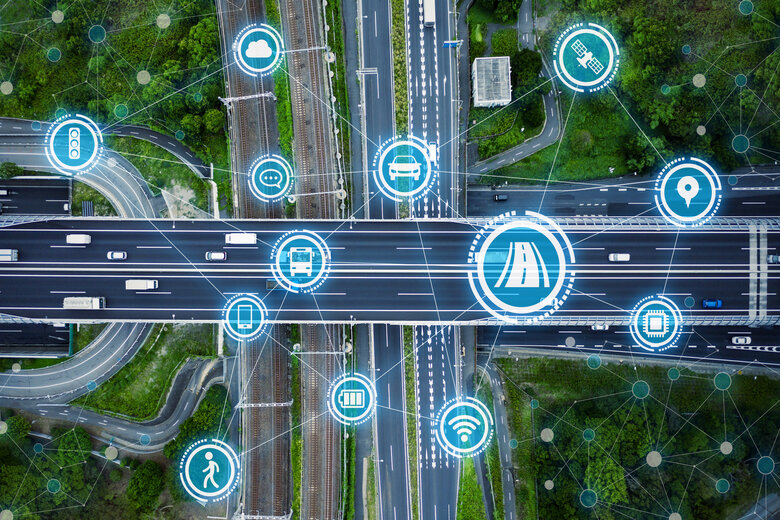
Road infrastructure spending is a government priority to help pull the Australian economy out of a recession, with the recent federal budget injecting $AUD7.5 billion dollars into road infrastructure projects in the planning phases, writes Rob Bryant.

It is critical in building these roads, tunnels and city bypasses of tomorrow that they meet future needs, and this includes catering to autonomous cars. According to Accenture, by 2040 four out of every 10 vehicles on the road will be autonomous, which means the planning and development of roads to support connected cars must start today.
While we’re some way off to seeing fully automated vehicles become ubiquitous on Australian roads, many cars already in use feature technology in the early stages of autonomy, such as lane keep assist and autonomous emergency braking.
In anticipation of autonomous vehicle technology, smart roads across cities and regions must be built now to improve the driver experience, asset management and road safety. We need to use technology to deliver technology. In return this adds value to the asset. With smart roads able to provide real-time information, such as congestion information, condition reports and weather outlooks, there’s strong potential to transform roads from simple pieces of infrastructure to commercial assets.
Driving value from our infrastructure assets is more important than ever as we face one of the biggest economic downturns within a generation. A key issue longer term is there may not be enough government budget to sustain and continually fund capital projects such as roads as changes in how we work, and population growth, combine to alter needs and priorities.
A major long-term challenge will be the addressing the demand for greater accountability in how funding is allocated and spent. ROI of projects will be a critical factor in making decisions about infrastructure investment, as will funding models and asset values.
Advancements in smart road technology mean construction companies are now better placed to guarantee road infrastructure spending generates a return on investment. With this technology advancement, state and local governments can take ownership of project data to maximise the value of the assets being built. Smart roads are shaping the future of transport infrastructure by creating connected data insights that help drive efficiencies, deliver better urban planning, as well as potential new revenue streams.
Driving value from smart roads
Every year $AUD3.37 billion dollars is lost to traffic congestion in Australia in its busiest capital cities; and this figure is increasing as the population continues to grow. By building smart highways with sensors built into the surface or overhead, our transport agencies gain the ability to monitor the traffic flow, ground conditions and overall performance of a road.
With data touch points throughout the road, predictability of vehicle movement is achievable almost as if it was on a train track without rails. This means traffic management can be alerted to real-time issues without having to send crews out, streamlining the critical response process and in turn saving time and money. It also means drivers can be informed in real-time on what to expect on their route to avoid traffic congestion and road dangers.
For both road owners and users, the technology provides better return because the road becomes a more valuable asset. Leveraging this connected data allows them to reduce suburban traffic and automate the journey, opening up opportunities for more motorists to utilise the road, particularly commercial vehicles.
At the same time, the ability to manage the asset closely during the construction phase also reduces the risk of rework and provides a chance to strategise early if problems arise to ensure the project remains on-track.
West Connex – a case study
The West Connex project in NSW is an example of a smart highway being built with future needs in mind, from design to construction.
The multi-billion dollar project demonstrates how the digital aspect is just as valuable as the physical components of a build. Using smart technology, project owners can see how the asset is constructed and what they need to consider as they plan and budget maintenance works too.
Smart sensor systems allow for real-time data collection resulting in faster response times to what is occurring on the road. These systems include managing the rate which vehicles enter the motorway at particular points and varying speed limits based on real-time traffic monitoring. The traffic is constantly being monitored as cameras relay a live traffic feed back to the traffic monitoring team, enabling them to respond immediately to a change in traffic conditions.
Building smart highways of tomorrow
Building a smart highway is much more complex than simply making tarmac and concrete. Building “digital twins” can be advantageous during the construction and design phase of these roads in order to track the asset over its lifecycle. Digital building allows contractors to take a much more detailed view of materials required, schedules associated with building and then have that referenced in the construction phase and through to the operation and maintenance phases.
Planning, design and documentation when creating smart roads is critical to ensure all elements are mapped out to avoid the risk of budget blow outs or rework. But with the right technology in place, the asset management process is simplified, allowing project planners to focus on higher-value tasks.
To prepare for the drivers of the future, roads must be created with smart technology now. The connected data created by smart roads generate returns not just through ongoing use, but from the design and construction stages as well, and their value should not be underestimated.
Rob Bryant is Executive Vice President, InEight, APAC
Comment below to have your say on this story.
If you have a news story or tip-off, get in touch at editorial@governmentnews.com.au.
Sign up to the Government News newsletter